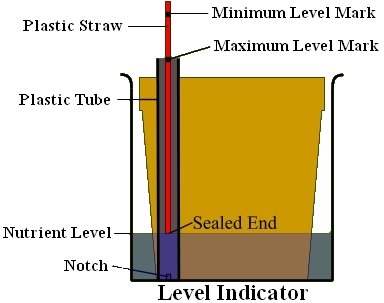Basically any kind of houseplant can adapt to the soilless situation. Even cacti and succulents. More mature the plant is, the longer it takes though. I found
here a list about suitable plants, but haven't tried them all unfortunately.
Adenium obesum
Aechmea fasciata
Aeschynanthus radicans
Aeschynanthus lobbianus
Aeschynanthus lobbianus var.
Aglaonema christina
Aglaonema commutatum
Aglaonema green light
Aglaonema king of siam
Aglaonema modestum
Aglaonema pseudobracteatum
Aglaonema silver bay
Aglaonema silver king
Alocasia aline
Alocasia calidora
Alocasia wentii
Aloe saponaria
Aloe vera
Ananas atriatus
Ananas comosus
Anthurium andraeanum-hybride
Anthurium arrow
Anthurium clarinervium
Anthurium dakota
Anthurium fiësta
Anthurium impreza
Anthurium jungle king
Anthurium latino Red
Anthurium pink champion
Anthurium poncho
Anthurium scherzerianum
Anthurium scherzer. amazone
Anthurium vitara
Anthurium white champion
Aralia (polyscias) balfouriana
Aralia (dizygotheca) castor
Aralia (polyscias) fabian
Aralia (polyscias) ming
Araucaria hetrophylla
Areca (chrysalido.) lutescens
Aspidistra elatior
Asparagus falcatus
Aspidistra elatior
Aspidistra pictus
Asplenium antiquum
Asplenium nidus
Asplenium viviparum
Aucuba japonica
Beaucarnea nolina
Beaucarnea recurvata
Begonia masoniana
Brassaia actinophylla
Bromeliaceae
Calathea bella
Calathea roseopicta
Calathea rufibarba
Calathea zebrina
Carludovica
Caryota mitis
Caryota urens
Cereus gounelli
Cereus HU490
Cereus monstruosus
Cereus peruvianus
Ceropegia radicans
Chamaedorea elegans
Chamaedorea metalica
Chamaedorea siefritzii
Chlorophytum comosum var.
Chrysalidocarpus lutescens
Cissus ellen danica
Cissus rhombifolia
Cissus striata
Clivia miniata
Clusea rosea
Cocos nucifera
Codiaeum veriegatum
Columnea hirta
Columnea microphylla
Cordyline fruticosa
Cordyline glauca
Cordyline terminalis
Corynocarpus leavigata
Corynocarpus variegatum
Crassula argentea
Crassula horntree
Crassula minor
Crassula ovata sunset
Crossandra infundibuliformis
Croton (codiaeum) batic comp.
Croton (codiaeum) curley boy
Croton (codiaeum) gold dust
Croton (codiaeum) iceton
Croton (codiaeum) mamey
Croton (codiaeum) petra
Croton (codiaeum) sunny star
Croton (codiaeum) wilma
Ctenanthe golden mosaic
Ctenanthe libbersiana
Cycas revoluta
Cyperus alternifolius
Cyrtomium falcatum
Davallia fejeensis
Davallia trichomanoides
Dieffenbachia
Dioon edule
Dizygotheca elegantissima
Dizygotheda veitchii
Dracaena bicolor
Dracaena compacta
Dracaena compacta l. surprise
Dracaena compacta malaika
Dracaena compacta variegatum
Dracaena deremensis
Dracaena fragrans
Dracaena fragrans cintho
Dracaena godsefiana
Dracaena gold coast
Dracaena janet craig
Dracaena kanzi
Dracaena lemon lime
Dracaena magenta
Dracaena marginata
Dracaena pubescens
Dracaena reflexa
Dracaena riki
Dracaena sanderiana
Dracaena santa rosa
Dracaena surculosa
Dracaena surprise Head
Dracaena ulises
Dracaena warneckii uliseo
Dracaena white jewel
Echinocactus bahiensis
Echinocactus grusonii
Echinocactus subinermis
Elettaria cardamomum
Ensete ventricosum
Epipremnum aureum
Epipremnum pinnatum
Euonymus japonica
Euphorbia ingens
Euphorbia lacteal
Euphorbia lactea cristata
Euphorbia lomii-hybride
Euphorbia mayurantani
Euphorbia milii red
Euphorbia pulcherrima
Euphorbia tirucalli
Euphorbia trigona Green
Euphorbia trigona Red
Fatsia japonica
Ferocactus stainesii
Ferocactus subinermis
Ficus alii
Ficus amstel gold
Ficus amstel king
Ficus anastacia
Ficus audrey
Ficus australis
Ficus benjamina
Ficus bushy prince lacia
Ficus cyathistipula
Ficus danielle
Ficus de gantel
Ficus deltoidea
Ficus deltoidea variegatum
Ficus elastica belize
Ficus elastica bourgondi
Ficus elastica melany
Ficus elastica robusta
Ficus foliole
Ficus golden king
Ficus goldie
Ficus green island
Ficus lyrata
Ficus lyrata bambino
Ficus longifolia
Ficus microcarpa Bonsai
Ficus microcarpa
Ficus moclame
Ficus natasja
Ficus nitida
Ficus nitida compacta
Ficus panda Bonsai
Ficus panda
Ficus pumila
Ficus regidan
Ficus repens
Ficus retusa
Ficus sagittata
Ficus safari
Ficus samantha
Ficus umbellata
Ficus velvet
Fittonia verschaffeltii
Ficus wiandi
Fittonia josan
Fittonia white anne
Gardenia jasminodies
Gasteria maculata
Gasteria verrucosa
Graptophyllum pictum
Guzmania minor
Hedera helix
Hedera helix tonny
Hedera montgomery
Helxine soleirolii
Heteropanax sinensis g. lady
Hibiscus rosa-sinensis
Howea forsteriana
Hoya carnosa compacta
Hoya multiflora
Hoya variegata
Hypocyrta strigillosa
Hypoestes phyllostachya
Impatiens
Ixora coccinea
Kalanchoe blossfeldiana
Leea burgundi
Leea coccinea
Livistona chinensis
Livistona rotundifolia
Maranta leuconeura
Marchallocereus
Medinilla magnifica
Microsorum crocodyllus
Monstera deliciosa
Monstera obliqua
Muehlenbeckia
Musa tropicana
Neodypsis
Neoregelia carolinea
Nephrolepis sonata
Nephrolepis exaltata
Nephrolepis obliterata
Orchids
Pachira aquatica
Pachycereus pringley
Pachystachys lutea
Pandanaceae
Pandanus utilis
Pandanus veitchii
Papyrus
Peace lilies
Peperomia caperata
Peperomia incana
Peperomia jellie
Peperomia obtusifolia
Peperomia pereskiifolia
Peperomia red margin
Peperomia smaragd
Peperomia usa
Pereskia aculeata
Phalaenopsis Orchids
Philodendron
Philodendron domesticum
Philodendron emerald red
Philodendron fun bun
Philodendron grand braziel
Philodendron imperial green
Philodendron imperial red
Philodendron lemon mandjari
Philodendron medisa
Philodendron nutans
Philodendron pertusem
Philodendron scandens
Philodendron selloum
Philodendron xanado
Phoenix canariensis
Phoenix roebelinii
Pilea cardierei
Pilosocereus azureus
Pittosporum tobira
Platycerium bifurcatum
Pleomele anita
Pleomele reflexa
Pleomele song of india
Pleomele song of jamaica
Pogonatherum paniceum
Poinsettia
Polaskia chichipe
Polypodium
Polypodium aureum
Polyscias balfouriana
Polyscias fruticosa
Polyscias scutellaria
Portulacaria afra
Pteris crassifolia
Pteris ensiformis
Radermachera sinica
Rhapis excelsa
Rhapis gracilis
Rhipsalidopsis gaertneri
Rhoeo
Rhoeo spathacea
Saintpaulia inonantha
Sansevieria cilindro
Sansevieria coral
Sansevieria cylindrica var.
Sansevieria futura
Sansevieria gr. somali hemp
Sansevieria hanii golden edge
Sansevieria laurentii
Sansevieria moonshine
Sansevieria trifasciata
Sansevieria zeylanica
Scheffera arboricola
Schefflera amate
Schefflera actinophylla
Schefflera arboricola
Schefflera gold capella
Schefflera louisiana
Schefflera paradiso
Schefflera trinette
Scilla violacea
Scindapsus aureus
Scindapsus golden pothos
Scindapsus marble queen
Scindapsus pictus
Scirpus cernuus
Senecio himalaya
Senecio rowleyanus
Siderasis fuscata
Solanum pseudocapsicum
Soleirolia soleirolii
Spathiphyllum
Spathiphyllum gokyo
Spathiphyllum mont blanc
Spathiphyllum sensation
Strelizia
Strelitzia nicolai
Strelitzia reginea
Syngonium
Syngonium white butterfly
Tetrastigma
Tetrastigma voinieranum
Tradescantia sitara
Tupidanthus clayptratus
Vanilla planifolia
Vriesea splendens
Washintonia filifera
Washingtonia robusta
Weberbauerocereus johnsonii
Yucca
Zamia fischeri
Zamia furfuracea
Zygocactus truncatus
Zamioculcas zamiifolia
I can add to the list the followings:
Aloe rauhii
Calathea albertii
Cotyledon tomentosa
Haworthia pentagona
Mangifera indica
Pachyphytum oviferum
Persea americana
Phlebodium aureum
Stapelia var.










